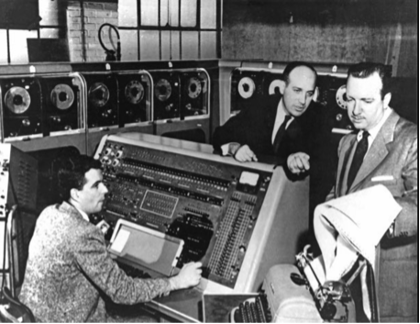The landscape of the modern world owes much to the advancements in technology, particularly in the field of computing. One pivotal milestone in this journey was the development of the UNIVAC I computer, which revolutionized the early computer industry and laid the foundation for the digital age. Created by Remington Rand, Inc., the UNIVAC I played a significant role in shaping the future of computing.
The UNIVAC I, short for Universal Automatic Computer I, was designed primarily by J. Presper Eckert and John Mauchly, the minds behind the ENIAC, the world’s first general-purpose electronic computer. Remington Rand, a company known for its typewriters and office equipment, acquired Eckert-Mauchly Computer Corporation, thus paving the way for the development of the UNIVAC I.
Introduced on June 14, 1951, the UNIVAC I marked a significant milestone in the history of computing. It was the first commercial computer manufactured in the United States. The machine utilized vacuum tubes for processing and magnetic tape for storage, offering unprecedented computing power at the time.
The UNIVAC I quickly gained attention for its capabilities, and its processing speed and ability to handle complex calculations made it a valuable tool for scientific research, military applications, and business operations. One of its notable achievements was its involvement in predicting the outcome of the 1952 U.S. presidential election. With a sample of just 1% of the voting population, the UNIVAC I successfully predicted Dwight D. Eisenhower’s victory, demonstrating the potential of computers in data analysis and forecasting.
Beyond its predictive abilities, the UNIVAC I played a crucial role in scientific research and engineering. It enabled scientists to perform complex calculations, analyze data, and simulate various scenarios. The UNIVAC I was particularly instrumental in scientific endeavors such as weather forecasting, nuclear research, and aerospace engineering. Its computational power facilitated faster and more accurate simulations, greatly enhancing scientific progress.
In addition to scientific and military applications, the UNIVAC I found its place in the business world. It was used for data processing tasks, including payroll calculations, inventory management, and financial analysis. The machine brought automation and efficiency to business operations, streamlining tedious manual processes and enabling companies to handle large volumes of data more effectively.
The introduction of the UNIVAC I sparked a revolution in the computer industry, showcasing the potential of electronic computing and setting the stage for further advancements in the field. Its success paved the way for the development of subsequent models and the eventual widespread adoption of computers in various sectors.
While the UNIVAC I was a groundbreaking achievement, it was not without its challenges. The machine was massive, occupying an entire room and requiring extensive maintenance and cooling systems. It was also prohibitively expensive, limiting its accessibility to a select few organizations and institutions.
Despite these challenges, the UNIVAC I made a lasting impact on the computer industry. Its success inspired further research and development, leading to the evolution of computers into smaller, more powerful, and affordable machines. The UNIVAC I set the foundation for the modern digital era, where computers have become an integral part of daily lives.
In 1955, Remington Rand merged with Sperry Corporation, forming Sperry Rand. The name “Remington Rand” continued as a subdivision for many years. However, the brand gradually faded as the company went through a series of mergers and acquisitions, eventually resulting in the formation of Unisys in 1986. Remington Rand, as an active corporation, became dormant.
Fast forward to 2022, when a new corporation emerged, adopting the name “Remington Rand, Inc.” The newly formed Remington Rand, Inc. acquired the rights to the historic Remington Rand name, bringing it back to life in the realm of technology. While unrelated to the original Remington Rand that pioneered UNIVAC I, the revival of the name pays homage to the rich legacy of innovation and progress that the UNIVAC I represented.
In a word, the UNIVAC I stands as a testament to human ingenuity and the power of innovation. From its ability to predict election outcomes to its impact on scientific research and business operations, the UNIVAC I demonstrated the immense potential of computers. While it may seem primitive by today’s standards, the UNIVAC I was a giant leap forward in its time, propelling humanity into a new era of technological advancement. Its legacy continues to inspire and remind the remarkable progress made since its creation, fueling our pursuit of even greater technological breakthroughs.


